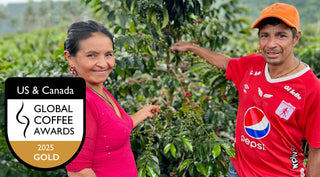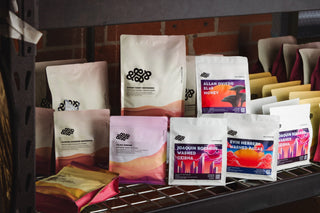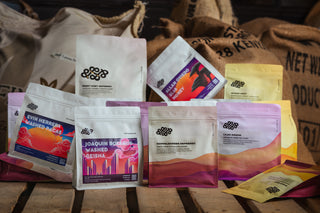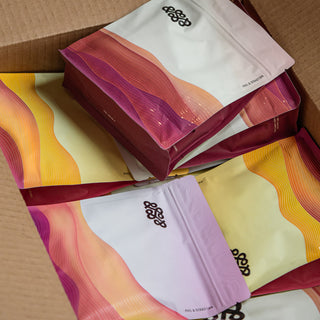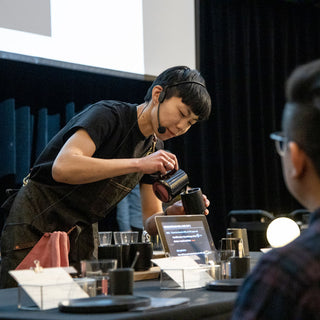So this past October I did my biannual visit to Colombia, where I got to visit all of the producers we work with, our awesome exporter, Osito and where I also got to cup through the harvest and select our lots (which are on their way to Calgary now). Of course I have tons to say about visiting the coffee producers, but I want to focus for now on one cool thing about my trip.
Back in 2018 I bought some Panama Geisha seeds and some Ethiopian Heirloom seeds to Jose Martinez to try to plant in his farm. He did so in small quantities back in 2018, but in 2021, he planted larger portions of his farm with both of these varieties. The way he did it was, as he saw a need to replace aging Caturra trees, he replaced those trees with Geishas or Ethiopias. So essentially, the Geisha and Ethiopia trees were planted in and amongst the Caturra trees.
Now, on the cupping table, I shockingly have never found the Ethiopia or Geisha to be particularly expressive for Jose Martniez. They taste “nice”, but not any better than his Caturra. This has perplexed me for the past couple of years. This year, as we walked through his farm and I tasted coffee cherries off the Geisha and Ethiopia trees, I found some trees had incredible tasting cherries while others had more plain/regular tasting cherries. When I taste Geisha cherries in Panama, they almost always taste incredible and very different than other varieties, so this phenomenon was foreign to me.
That night, I couldn’t really sleep and I wondered if there had been some natural genetic mutations or cross pollination. Cross pollination is possible, but should be limited since coffee flowers are hermaphrodites (they can self-pollinate) but I think it’s probably still a reasonable explanation. Regardless of the cause, I started to wonder if we selectively marked the trees with incredible tasting cherries and picked coffee only from those trees, if we would see the notes of Geisha or Ethiopia in the cup.
So, the next morning I called Jose and asked if he would be willing to do this experiment together. He instantly agreed and the next day I went to the farm and walked - in the pouring rain - through the farm and tasted coffee cherries with his wife Francy, tree by tree, marking with yellow tape the trees that tasted special.
The next day, Francy picked coffee from only those trees and processed it two different ways - both washed, but with a different number of hours of fermentation. The coffee is still drying, but as soon as it’s dried, they will send samples to Calgary for us to taste and see if the experiment resulted in better tasting coffee. Stay tuned for part 2!
- Seb

